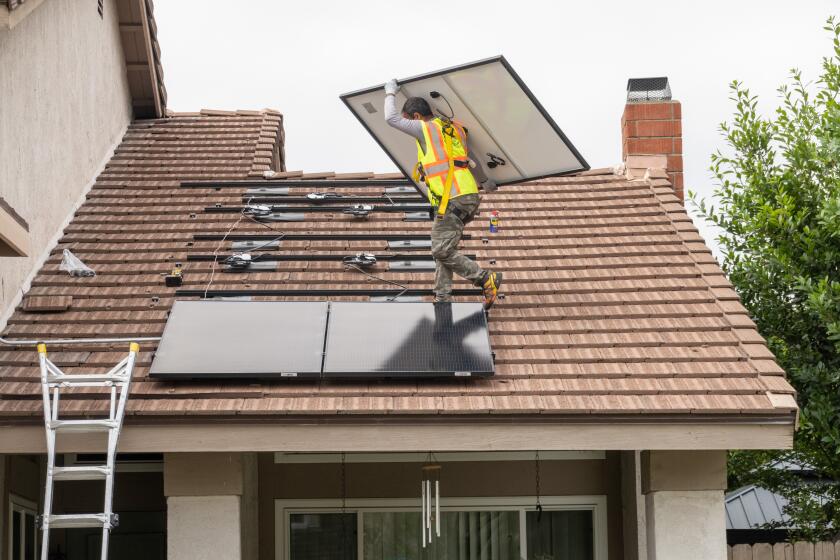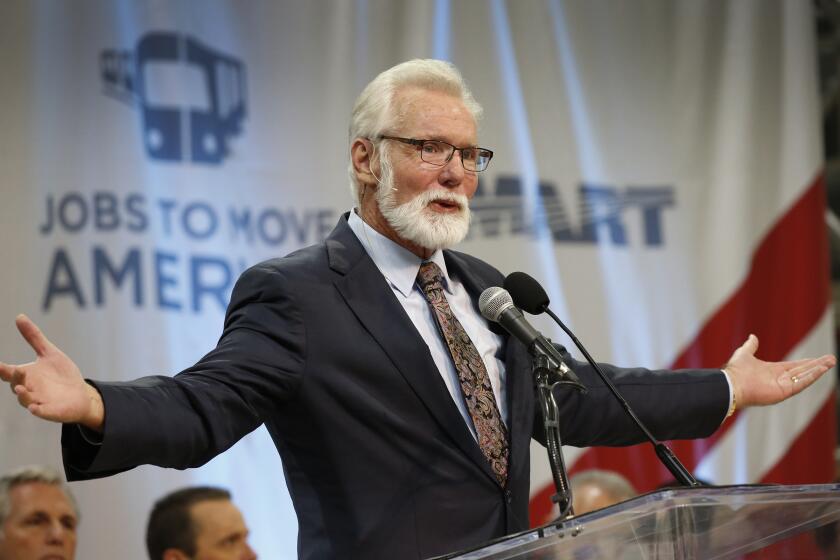Rolling back fuel economy standards could mean bigger cars — and less progress on climate change
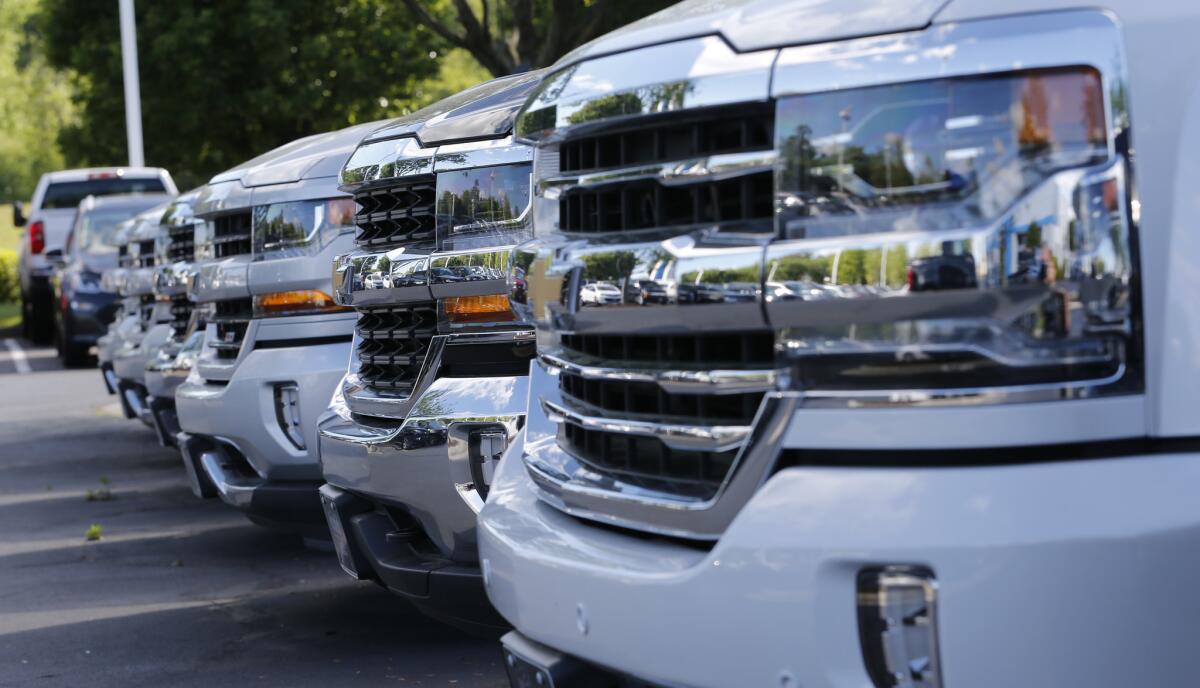
- Share via
Gas prices have been so low in recent years that more Americans are choosing to buy bigger vehicles, a trend that has stymied efforts to cut auto emissions.
One thing reining in consumer appetite for trucks and SUVs has been tough fuel economy standards adopted several years ago by California and the Obama administration. Those rules are forcing automakers to reduce greenhouse gas emissions and put cleaner, more efficient gas, hybrid and electric vehicles in showrooms, whether customers want them or not.
But this week, the Trump administration declared that those standards are too onerous for the auto industry and should be weakened — a move that would undermine the single biggest action the federal government has taken to slow climate change while threatening California’s ability to adopt its own, stricter rules for tailpipe emissions.
Negotiations between the federal and California officials are ongoing. But if nationwide gas-mileage standards are indeed rolled back, the country could lose an important bulwark in keeping the popularity of gas-guzzling vehicles from driving emissions up again.
The rules at issue require automakers to meet fleet-wide averages of more than 50 miles per gallon by 2025, which when factoring in credits and other flexibility options, translates to about 35 mpg in real-world driving conditions. Those standards were projected to save consumers thousands in gas money over the lifetime of a new car, prevent billions of barrels of oil from burning and keep billions of metric tons of carbon dioxide out of the atmosphere, according to estimates by the EPA under the Obama administration.
Those projections make it clear that tailpipe emissions and oil consumption would rise considerably if the standards are weakened, though precise pollution impacts can’t be quantified because revised targets have not yet been released.
“If the administration stops any further improvement from the regulations, that will pump an additional half billion tons of global warming pollution just from the vehicles sold between 2022-2025,” said Dan Becker, director of the Washington D.C.-based Safe Climate Campaign.
A scaling back of the rules would likely bring years of court battles, and potentially, a confusing situation where automakers have to build to two different standards — one for California and the 12 other states that follow its rules and account for one-third of all car sales — and another for the rest of the country.
“Automakers will get the flexibility they wished for, but at what cost?” said Jessica Caldwell, executive director of industry analysis at car-shopping website Edmunds. “The unfortunate reality is that this decision comes with a logistical nightmare in the short term.”
Those strict standards were necessary, experts in environmental regulation say, to push against the influence of low gas prices.
“For many, many years until these standards were issued we saw no increase in average fuel economy,” said Ann Carlson, an environmental law professor at UCLA. “Now we’re seeing many more models that are either zero-emission or very high-economy hybrids. We see larger cars getting more fuel efficient and regular combustion engines getting more fuel efficient. I don’t think that happens without government regulations.”
New cars and trucks go an average of five more miles per gallon than a decade ago, releasing less pollution and saving drivers money.
Weakening fuel-efficiency rules would be the latest, and perhaps most consequential step EPA Administrator Scott Pruitt has taken to pull back environmental protections at the request of regulated industries.
The auto industry began pushing to weaken the Obama-era fuel economy standards soon after President Trump took office, complaining that the standards will be too difficult and expensive, forcing them to build a greater number of more efficient — but less profitable — gas, hybrid and electric cars. Relaxing the standards to reflect those market realities, automakers argue, will allow American manufacturers to remain competitive and sell more cars while the world market makes a transition to zero-emission vehicles.
“The key to the equation isn’t just the highest possible standard, it’s the highest standard we can achieve while keeping vehicles affordable,” National Automobile Dealers Assn. President Peter Welch said at an announcement event at EPA headquarters Tuesday. “Research shows that monthly payment is the top concern for our customers. We lose affordability, we lose sales. It’s really as simple as that.”
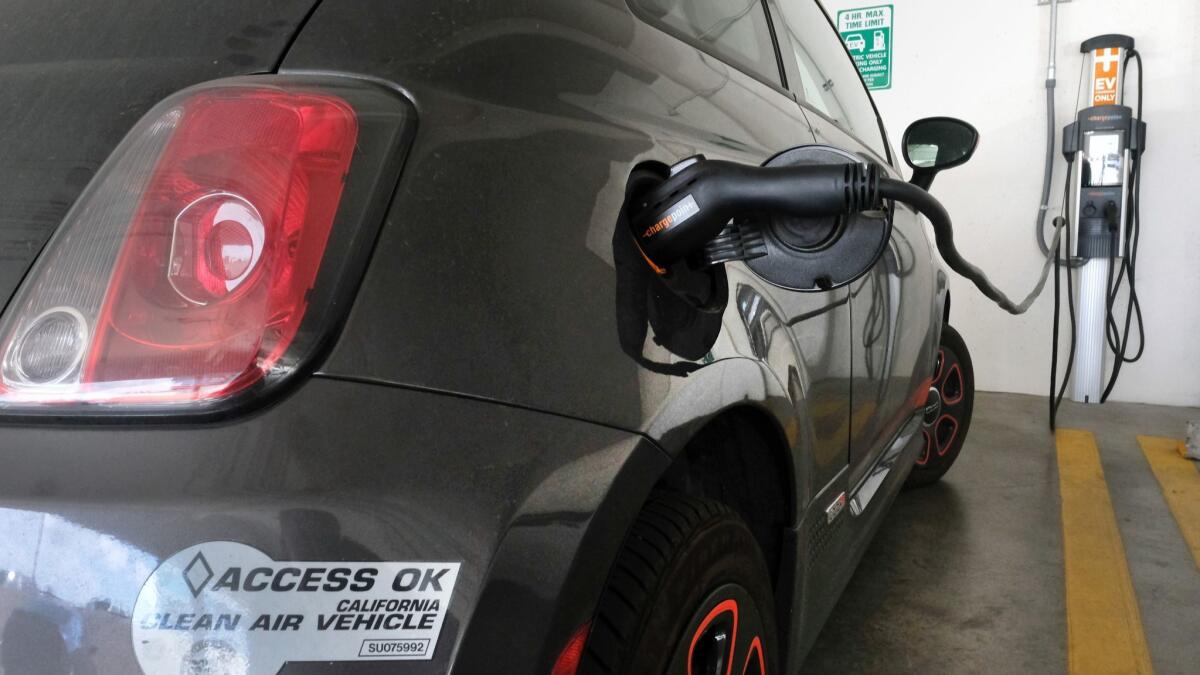
Rules to force emissions reductions are crucial for the transportation sector because it’s the biggest source of U.S. greenhouse gas emissions. The industry is also more reliant on technology-forcing regulations to spur pollution reductions, according to experts. Unlike the energy sector, where economics are shifting power plants away from coal to lower-polluting natural gas, when it comes to cars and trucks, gas prices and consumer preferences are pushing in the opposite direction, toward higher-polluting vehicles.
“That means a strong regulatory effort is necessary to really push us, ultimately, toward zero-emission vehicles,” Carlson said.
In announcing it would start the process of rolling back the mile-per-gallon targets, the EPA said the Obama administration “set the standards too high” and that federal regulators would develop a proposal to set “more appropriate” ones.
Pruitt — who in recent days has faced a flurry of critical news reports and questions about using taxpayer funds for first-class flights and other ethics matters — also threatened to revoke the waiver that allows California to adopt its own vehicle emissions rules.
In remarks at the Tuesday event with auto industry executives, he presented the revisions to fuel economy standards as another step in the president’s “deregulatory agenda.”
“The focus in the past has been on making manufacturers in Detroit, making manufacturers in various parts of the country make cars that people aren’t going to buy,” Pruitt said. “Our focus should be on making cars that people purchase actually more efficient.”
Air Resources Board spokesman Stanley Young said an analysis on the effects of rolling back vehicle standards is not possible until revised targets are released. But he pointed to several gas-fueled models for sale in showrooms today that already meet standards for five years from now, including small and midsize cars like the Honda Civic and Mazda 6, SUVs like the Nissan Rogue and the Ford F-150 pickup truck.
“This demonstrates that the existing standards are appropriate and technologically feasible,” Young said.
Weakening them would mark the latest step President Trump has taken to unravel policies aimed at fighting climate change. Last year, Trump announced his intention to withdraw the U.S. from the Paris climate agreement and Pruitt began the process to repeal a rule to slash carbon emissions from power plants.
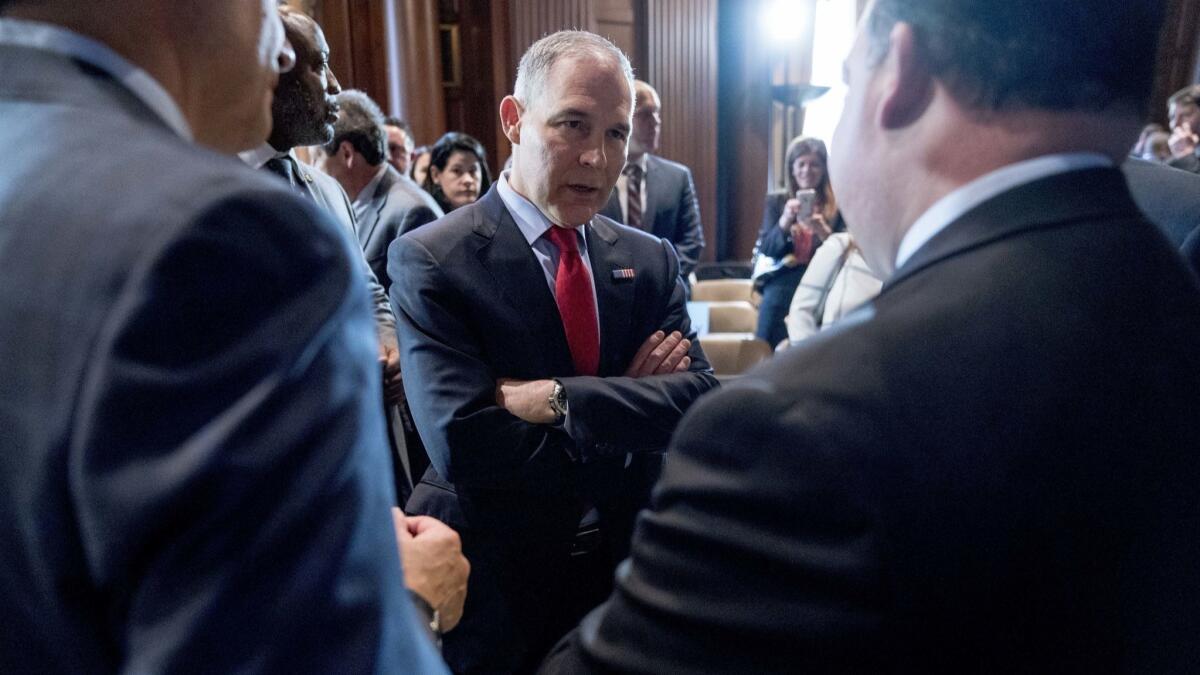
Environmentalists criticized the Trump administration’s actions as increasing the likelihood of the planet burning through its “carbon budget.” That’s the internationally agreed-upon emissions threshold designed to keep global temperatures from rising no more than 2 degrees Celsius above pre-industrial levels to avoid the most devastating effects of climate change.
Talks between California and the Trump administration could bring some kind of compromise. Potentially, that could involve relaxing some of the near-term requirements in exchange for federal support of more aggressive long-term goals and the preservation of California’s ability to set its own, stricter standards through 2030.
The California Air Resources Board has already pledged to keep the Obama standards in place. Air Resources Board Chair Mary Nichols said in a statement that the EPA’s decision, “if implemented, will worsen people’s health with degraded air quality and undermine regulatory certainty for automakers.” The state is expected to sue the Trump administration if it revokes its waiver to regulate vehicle pollution.
In the meantime, experts warn that stepping back from fuel-efficiency standards will put America at a competitive disadvantage with Asian and European countries that are moving ahead with tougher rules and stand to reap the economic benefits of the resulting technological innovations, such as better electric cars, batteries and hydrogen fuel cells and more clean-energy jobs.
“Ironically, cutting auto standards would play right into the hands of China, which has taken a lot of steps to clean up and have more fuel efficiency” Carlson said. “As the U.S. signals the opposite to its manufacturers, it’s missing an opportunity.”
More to Read
Sign up for Essential California
The most important California stories and recommendations in your inbox every morning.
You may occasionally receive promotional content from the Los Angeles Times.







